Critters Down Under: Fungus Gnats

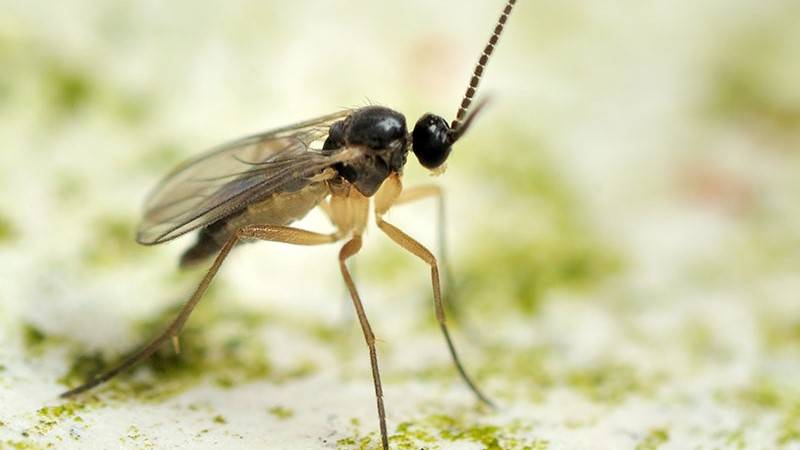
One of the most common insects seen in the greenhouse are fungus gnats (Bradysis and Orfelia sp.). While fungus gnats rarely cause significant damage to larger plants, they can cause root damage and may stunt young and weak plants.
What are the Differences Between Fungus Gnats and Shore Flies?
Since they are both common in greenhouses, adult fungus gnats are often confused with shore flies. However, fungus gnats more closely resemble mosquitoes. They have long antennae, thin bodies, and do not have white spots on their wings.
Fungus gnats are more often seen on the surface of growing media and foliage than in the air since they are very weak fliers. The larvae are white/translucent with a black head, whereas shore fly larvae have no discernable head and the entire larva is tan to light brown.
Damage of Fungus Gnats in Greenhouse
Adult fungus gnats do not damage plants and primarily consume water and flower nectar. However, the larvae feed on fungus, organic matter and sometimes plant roots. If larval populations are high enough, they have even been found to travel up inside the crown and stems of the plants.
By feeding on plant roots, the larvae create openings for disease organisms to enter the plant and spread disease between plants. They have been found to transmit Fusarium, Pythium and Thielaviopsis.
Life Cycle of Fungus Gnats
The life cycle of fungus gnats is approximately 28 days but may be faster if temperatures are warm or slower if temperatures are cold. The female will lay her eggs on damp organic matter where they hatch in 3 days.
During their next development stage, the larvae will feed mostly on fungi (their preferred food source), organic matter and possibly plant roots for 12-14 days before entering the pupal stage, with adults emerging 3-6 days later.
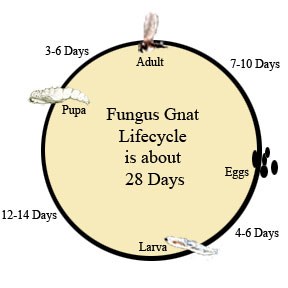
| Life cycle stage | Length of stage | Comments |
|---|---|---|
| Eggs | 4-6 days | Small, yellowish-white eggs |
| Larvae | 12-14 days | White body with black head |
| Pupae | 3-6 days | White, then darkens |
| Adults | 2-3 weeks | Long legs and antennae, thin body |
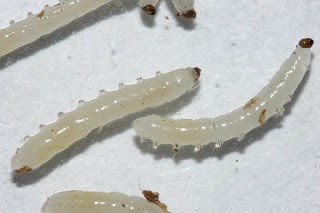
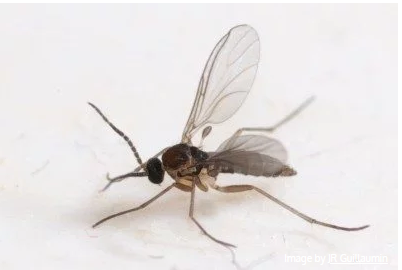
Fungus Gnats Control in Greenhouse
Since much of its life is spent in the larval stage, in or on the surface of growing media, the most effective controls should focus on minimizing moisture and fungi growth. Make sure to locate and eliminate areas where water accumulates on surfaces and under benches. Clean up spilled growing medium especially if it stays moist or wet.
Research has shown that all growing media are equally attractive to fungus gnats. However, the ones that hold more water and organic growing media tend to have higher populations of adults emerge from them.
The assumption is that growing media that hold more water encourage fungal and microbial growth, increasing the food source, and organic media naturally have higher populations of fungi and microorganisms.
Growing media such as PRO-MIX® BX BIOFUNGICIDE™ + MYCORRHIZAE™ help control certain insects by suppressing their food sources and plant susceptibility.
PRO-MIX® HP BIOFUNGICIDE™ + MYCORRHIZAE™, being high porosity, will dry faster and help prevent the propagation of fungus gnats. The key is to let the growing media dry completely (becoming tan or pale brown) between waterings.
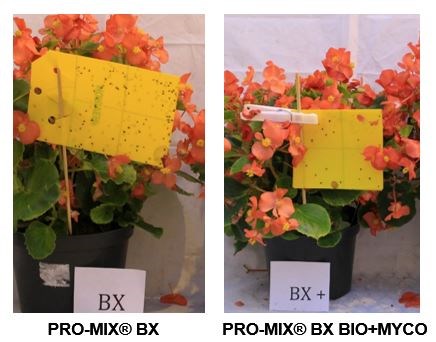
As with all insect and disease problems, keeping the greenhouse clean must be a top priority. Yellow sticky cards are an effective tool for monitoring fungus gnat populations and will indicate when chemical control may be necessary.
Chemical or biological control, however, is seldom necessary since minimizing fungus and other microbial growth in the greenhouse will minimize the food source necessary for fungus gnats to survive.
Following the steps of Integrated Pest Management (identify, evaluate, prevent, action and monitor) is always an effective way of preventing and controlling insect infestation.
Reference: